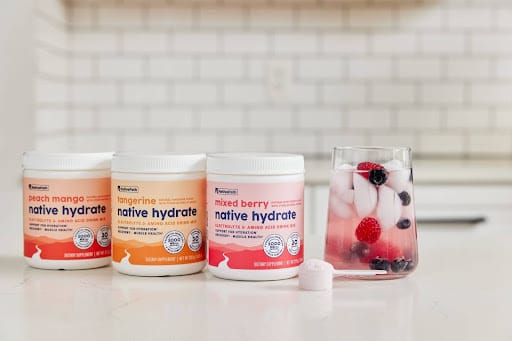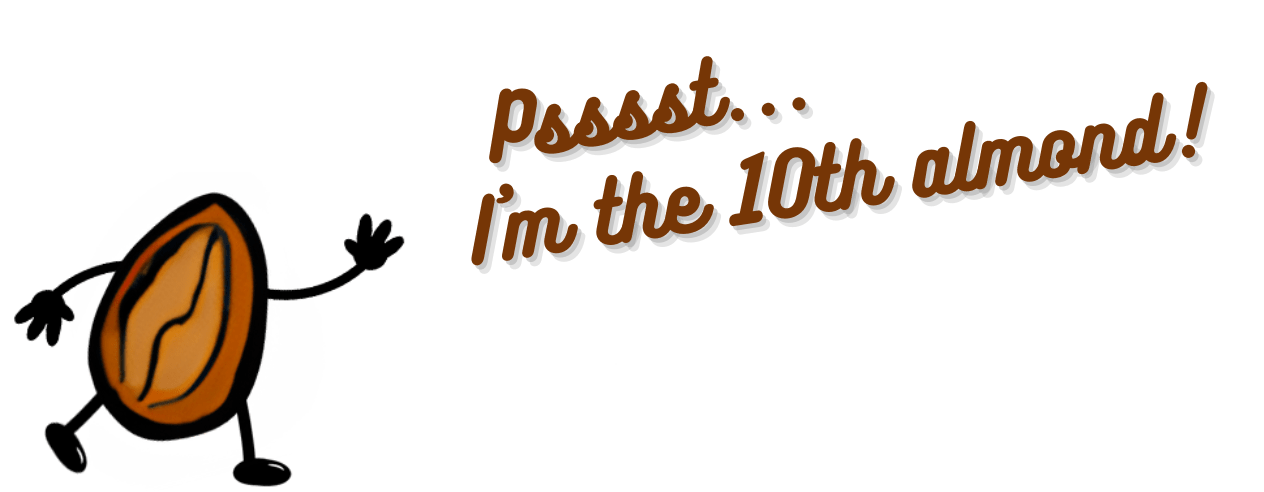❝To experience peace does not mean that your life is always blissful. It means that you are capable of tapping into a blissful state of mind amidst the normal chaos of a hectic life.❞
In A Rush?
Today’s 30-Second Summary
If you don’t have time to read the whole email today, here are some key takeaways:
Nori seaweed beats even spirulina for nutritional density, but that’s not all it has in its favor.
Today’s main feature looks not only at how it’s a plant food that contains nutrients usually only found in animals, but also its other benefits, including being anti-aging, cardioprotective, antidiabetic, and anti-Alzheimer’s. Here’s to healthy long life!
How’s your hydration looking today? For most people, at any given time, it’s not great. But it doesn’t have to be that way!
Today's sponsor NativePath is offering a 365-day money-back guarantee on their range of electrolyte and amino acid drink mixes, which are great for your kidneys, bladder, and pelvic floor muscles.
Today’s featured recipe is for a spiced (and very healthy and tasty) fruit & nut chutney that you’ll want to make now, so that it’ll be a little aged when you want it later!
Read on to learn more about these things, or click here to visit our archive
A Word To The Wise
Native Americans Have Shorter Lifespans
But it’ll take more than just improved healthcare to fix the damage already done:
Watch and Learn
The Vagus Nerve's Power for Weight Loss
Dr. Arun Dhir is a university lecturer, a gastrointestinal surgeon, an author, and a yoga and meditation instructor, and he has this to say:
Prefer text? The above video will take you to a 10almonds page with a text-overview, as well as the video!
Research Review Monday
A Deeper Dive Into Seaweed
We wrote briefly about nori yesterday, when we compared it with well-known superfood spirulina. In nutritional terms, it blew spirulina out of the water:
We also previously touched on it here:
21% Stronger Bones in a Year at 62? Yes, It’s Possible (No Calcium Supplements Needed!) ← nori was an important part of the diet enjoyed here
What is nori?
Nori is a seaweed, but that can mean lots of different things. In nori’s case, it’s an aggregate of several kinds of red algae that clump together in the sea.
When dried and/or toasted (which processes improve* the nutritional value rather than diminishing it, by the way), it looks dark green or dark purple to black in color.
*Effects of pan- and air fryer-roasting on volatile and umami compounds and antioxidant activity of dried laver (Porphyra dentata) ← this is nori, by another name
If you enjoy sushi, nori is the dark flat sheety stuff that other things are often wrapped in.
The plant that has animal nutrients
As established in the head-to-head we linked above, nori is a nutritional powerhouse. But not only is it very full of the perhaps-expected vitamins and minerals, it also contains:
Omega-3 fatty acids, including EPA, which plants do not normally have (plants usually have just ALA, which the body can convert into other forms including EPA). While ALA is versatile, having EPA in food saves the body the job of converting it, and thus makes it more readily bioavailable. For more on the benefits of this, see:
Iodine, which land plants don’t generally have, but seaweed usually does. However, nori contains less iodine than other kinds of seaweed, which is (counterintuitively) good, since other kinds of seaweed often contain megadoses that go too far the other way and can cause different health problems.
Recommended daily amount of iodine: 150µg ← note that’s micrograms, not milligrams
One 10g serving of dried nori contains: 232µg ← this is good
Tolerable daily upper limit of iodine: 1,100µg (i.e: 1.1mg)
One 10g serving of dried kombu (kelp) contains: 13,270µg (i.e: 13.3mg) ← this is far too much; not good!
So: a portion of nori puts us into the healthiest spot of the range, whereas a portion of another example seaweed would put us nearly 13x over the tolerable upper limit.
For why this matters, see:
As you might note from the mentions of both hypo- and hyperthyroidism, (which are exacerbated by too little and too much iodine, respectively) hitting the iodine sweet spot is important, and nori is a great way to do that.
Vitamin B12, again not usually found in plants (most vegans supplement, often with nutritional yeast, which is technically neither an animal nor a plant). However, nori scores even higher:
Beyond nutrients
Nori is also one of the few foods that actually live up the principle of a “detox diet”, as it can help remove toxins such as dioxins:
It’s also been…
❝revealed to have anti-aging, anti-cancer, anti-coagulant, anti-inflammatory, anti-microbial, anti-oxidant, anti-diabetic, anti-Alzheimer and anti-tuberculose activities.❞
(for this to make sense you will need to remember that nori is, as we mentioned, an aggregate of diverse red algae species; in that paper, you can scroll down to Table 1, and see which species has which qualities. Anything whose name starts with “Porphyra” or “Porphridum” is found in nori)
Is it safe?
Usually! There are two potential safety issues:
Seaweed can, while it’s busy absorbing valuable minerals from the sea, also absorb heavy metals if there are such pollutants in the region. For this reason, it is good to buy a product with trusted certifications, such that it will have been tested for such along the way.
Seaweed can, while it’s busy absorbing things plants don’t usually have from the sea, also absorb allergens from almost-equally-small crustaceans. So if you have a seafood allergy, seaweed could potentially trigger that.
Want to try some?
We don’t sell it, but here for your convenience is an example product on Amazon 😎
Enjoy!
Our Sponsors Make This Publication Possible
Don't drink more... Drink smarter!
You've probably heard that the human body is about 60% water.
That was true... In our 20s, anyway. By the age of 50, the average is more like 51.5%, and that number continues to drop as we get older.
But it doesn't have to be that way.
NativePath is offering an optimized blend of electrolytes and amino acids, that has been shown to reduce UTIs by 58%, improve muscle strength by 36%, and yes, that includes strengthening the bladder!
In short: you don't have to drink more, if you drink smarter.
Best of all, there's a 365-day money-back guarantee, so there's no reason not to try it out and see if you like it:
Please do visit our sponsors—they help keep 10almonds free
This Or That?
Vote on Which is Healthier
Yesterday we asked you to choose between spirulina and nori—we picked the nori (click here to read about why), as did 33% of you!
Now for today’s choice:
Click on whichever you think is better for you!
Recipes Worth Sharing
Spiced Fruit & Nut Chutney
‘Tis the season to make the chutney that will then be aged chutney by the time you want it later! And unlike supermarket varieties with their ingredients list that goes “Sugar, spirit vinegar, inverted glucose-fructose syrup,” this one has an array of health-giving fruits and nuts (just omit the nuts if you or someone you may want to give this to has an allergy), and really nothing bad in here at all. And of course, tasty healthful spices!
Click below for our full recipe, and learn its secrets:
One-Minute Book Review
Scattered Minds: The Origins and Healing of Attention Deficit Disorder – by Dr. Gabor Maté
This was not the first book that Dr. Maté sat down to write, by far. But it was the first that he actually completed. Guess why.
Writing from a position of both personal and professional experience and understanding, Dr. Maté explores the inaptly-named Attention Deficit Disorder (if anything, there’s often a surplus of attention, just, to anything and everything rather than necessarily what would be most productive in the moment), its etiology, its presentation, and its management.
This is a more enjoyable book than some others by the same author, as while this condition certainly isn’t without its share of woes (often, for example, a cycle of frustration and shame re “why can’t I just do the things; this is ruining my life and it would be so easy if I could just do the things!”), it’s not nearly so bleak as entire books about trauma, addiction, and so forth (worthy as those books also are).
Dr. Maté frames it specifically as a development disorder, and one whereby with work, we can do the development later that (story of an ADHDer’s life) we should have done earlier but didn’t. In terms of practical advice, he includes a program for effecting this change, including as an adult.
The style is easy-reading, in small chapters, with ADHD’d-up readers in mind, giving a strong sense of speeding pleasantly through the book.
Bottom line: when it’s a book by Dr. Gabor Maté, you know it’s going to be good, and this is no exception. Certainly read it if you, anyone you care about, or even anyone you just spend a lot of time around, has ADHD or similar.
Penny For Your Thoughts?
What did you think of today's newsletter?
Wishing you the most well-informed start to a healthy week,
The 10almonds Team









